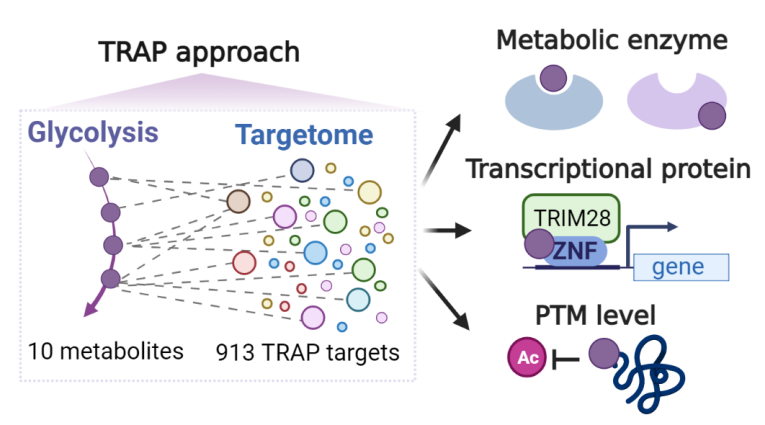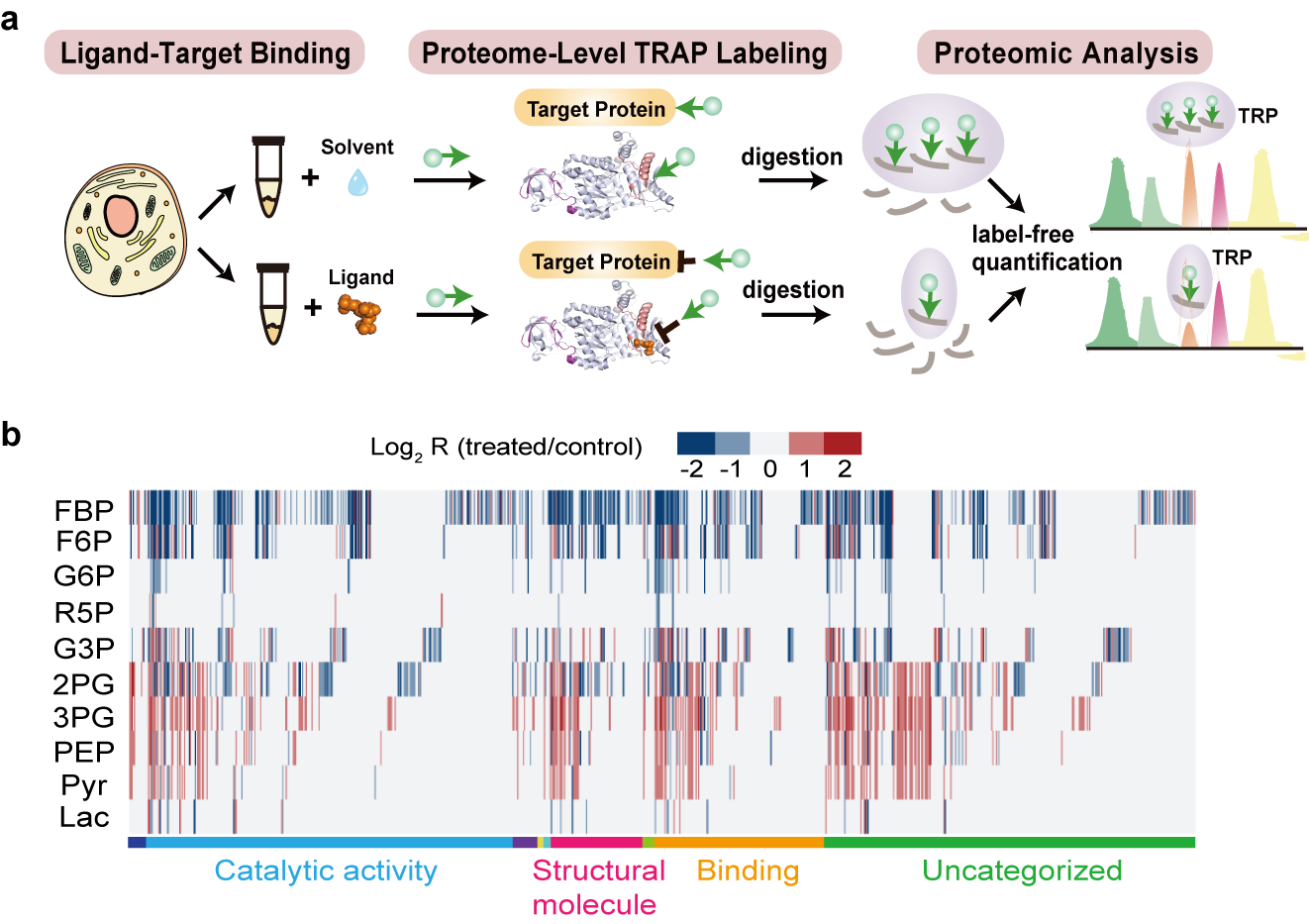Abstract
Hyperactivated glycolysis is a metabolic hallmark of most cancer cells. Although sporadic information has revealed that glycolytic metabolites possess nonmetabolic functions as signaling molecules, how these metabolites interact with and functionally regulate their binding targets remains largely elusive.Here, we introduce a target-responsive accessibility profiling (TRAP) approach that measures changes in ligand binding-induced accessibility for target identification by globally labeling reactive proteinaceous lysines. With TRAP, we mapped 913 responsive target candidates and 2,487 interactions for 10 major glycolyti metabolites in a model cancer cell line. The wide targetome depicted by TRAP unveils diverse regulatory modalities of glycolytic metabolites, and these modalities involve direct perturbation of enzymes in carbohydrate metabolism, intervention of an orphan transcriptional protein’s activity and modulation of targetome-level acetylation. These results further our knowledge of how glycolysis orchestrates signaling pathways in cancer cells to support their survival, and inspire exploitation of the glycolytic targetome for cancer therapy.
Article:https://www.nature.com/articles/s41589-023-01355-w





